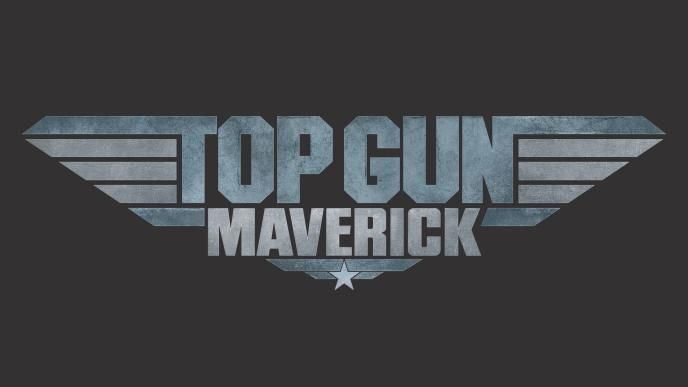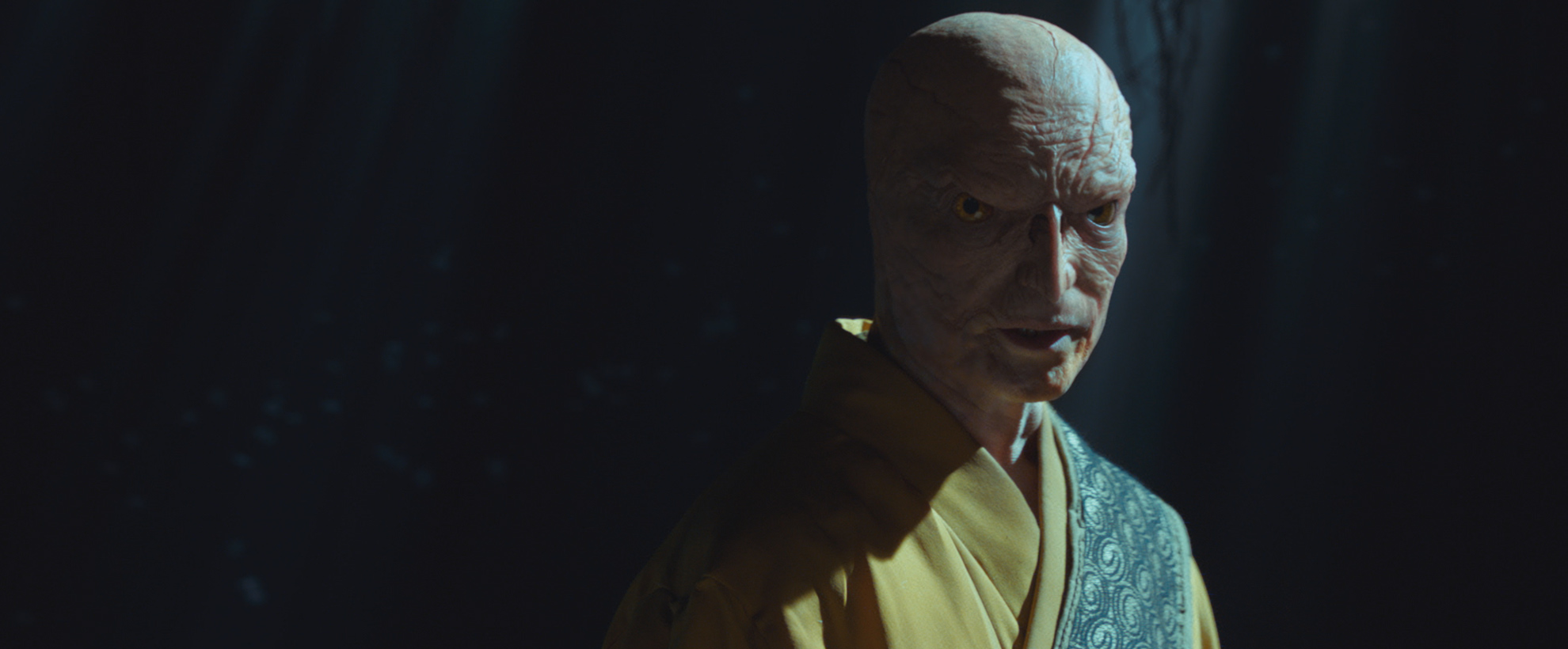
47 Ronin
Dragons, flying cloth, rampaging beasts, teleporting bird warriors, spiders, foxes, huge environments, you name it – 47 Ronin has it all when it comes to visual effects. Framestore had a huge hand in it all, with Christian Manz supervising the VFX for the whole show, the art department designing many of the creatures and the VFX film department delivering more than 500 shots. WIth the film in postproduction for nearly two years, It meant that every department had the opportunity to produce outstanding work from the initial concepts through to the final images.
Framestore astounded me with their combination of technical skill and artistry in creating the world of 47 Ronin. From conception right through to execution, they created creatures, FX and environments that are truly unique.
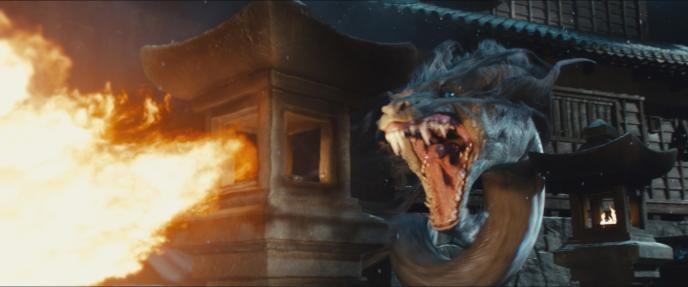
Diving into a world of Dragons...
Pre-production for 47 Ronin began at Shepperton in December 2010. Filming commenced with a three month stint in Budapest, which was followed by a return to London in summer 2011. With the first round of filming done, the film went into two years of post production supervised by Overall VFX Supervisor Christian Manz at a number of VFX houses.
“Carl’s brief was always to make it beautiful” says Christian. “From the very beginning he just wanted artists working on it. We based it on Japanese artwork and even looked at things like Hayao Miyazaki to give it that very Japanese look and to make it a little off-kilter. We shot in native stereo, which is quite rare these days, and shooting those big action shots through forests in stereo certainly made it more complicated.”
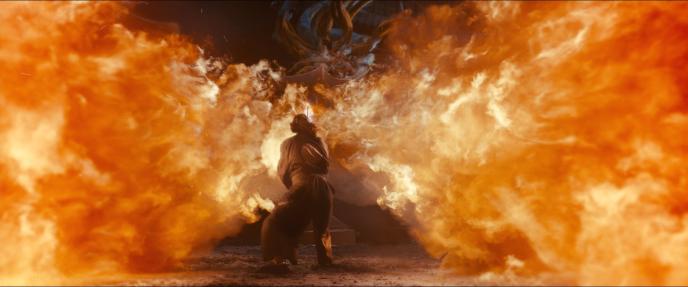
Creating the Kirin
The Kirin sequence was one of those big action shots, with the mythical beast thundering through trees, smacking samurai from their steeds and dragging horses along with it. It’s a complex mix of live action and CG elements, all interacting with each other and of course, all in native stereo. “Framestore have a pretty good track record for making creatures run through forests and fields but in the case of the Kirin he also needed to bulldoze through anything that got in his way. It was this scale and physicality that we worked hardest to achieve” says Sirio Quintavalle, VFX Supervisor.
The Kirin’s design (a concept worked up by the art department) features several different exposed visual features – its mane, interwoven tale and bulging muscles that are visible underneath both short-fur and crocodile-like skin types make it a very complex creature as, once animated, all of those features had to interact with one another. During animation, the artists had to make sure that its movement conveyed its enormous weight while keeping it agile and fast enough to be a suitable adversary for the chasing samurai.
The Kirin was tracked using 3D Equaliser, with Silhouette and Nuke used for paint and roto, Maya for animation and lighting and Nuke for Compositing. The teams used the well-honed in-house tools for the fur and muscle simulations. Global illumination and Arnold allowed for a realistic and subtle lighting and the compositing team was instrumental in pulling all the elements together.
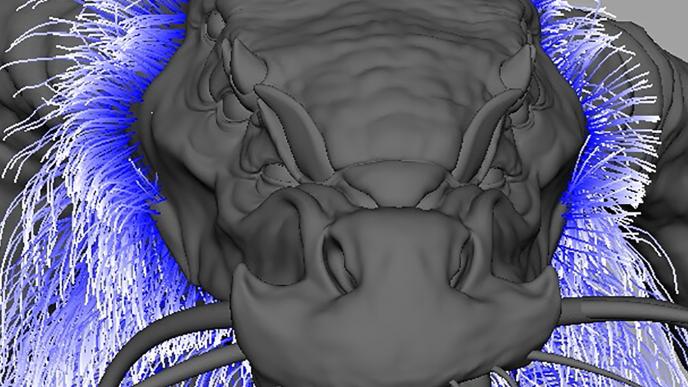
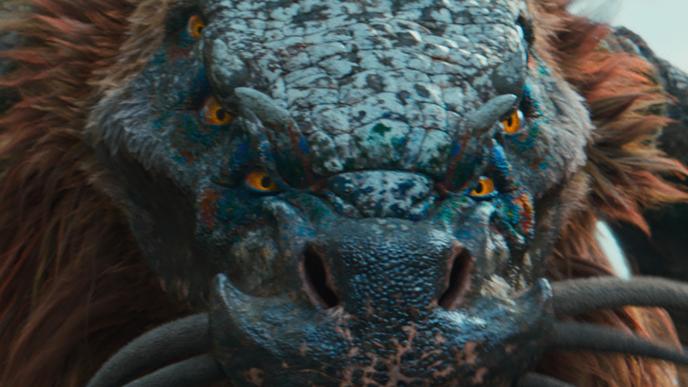
Crafty Cloth
One of the most difficult elements of 47 Ronin was its use of cloth. It’s a recurring visual motif that features in several major sequences, as an element of different characters (the Tengu, the dragon) and almost as a character itself, when the witch transforms into a swirling cloud of green silk.
“It was definitely one of the most difficult things,” says Mike Mulholland, “because cloth simulation is very difficult to direct. What you don’t want to do is make it look as if it’s being moved on a wire, you want it to feel very natural. It’s making it do something that isn’t physically correct, which is tricky because simulations are based on physical properties. You don’t have direct control of a sim – you have to almost influence it with external forces, it was a very complicated set of cloth sims! Luckily we had a great crew of Creature FX guys.”
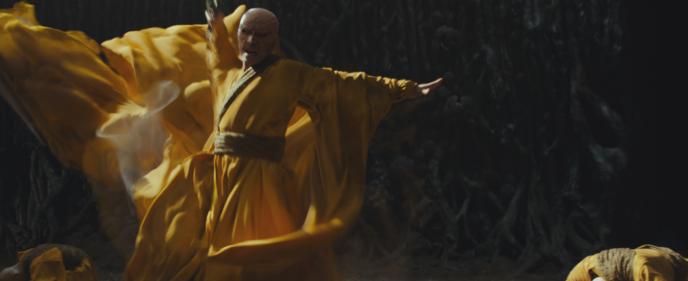
Tengu Time
The witch transformation was a major cloth sequence, being an incredibly long shot to do a sim for, but the most challenging use of simulated-yet-directed cloth comes in the Tengu sequence – a fight scene between the ronin and a band of Tengu warriors; bird-like monks with the ability to disappear and reappear in a cloud of rippling material.
How do you film people disappearing and reappearing instantly? “It was the biggest headache in terms of how to shoot things” says Christian Manz. “We cast three identical-ish stuntmen who were made up to look similar so they could leap out as if they were the same person that had just teleported, then we would paint them out when they weren’t meant to be in shot. That worked for some shots, whereas in others they are completely CG.”
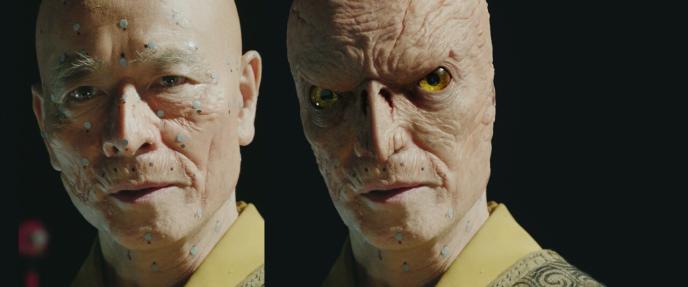
Into the dragon’s den...
The film’s climactic showdown with the witch sees her transform into an even more dangerous form – a dragon that combines the character’s earlier incarnations with other elements of Japanese mythology. The creature actually came about much later than the others, and went from concept, through post-vis all the way to VFX at Framestore.
“We talked about what the best-looking Japanese dragon we’d seen was and thought of Haku in Spirited Away” says Kevin Jenkins, Art Department Director. “We wanted to do something that was cool and big and violent like him. It’s a tribute to Miyasaki in a way.” As well as concepting and designing the dragon, the art department also modelled and textured the creature, then handed the asset over to VFX to take into their pipeline and enhance. “While post-vis was going on we started rigging the dragon back in London. We had Matt rigging the serpent and Rich in CFX was doing the CFX elements of the hair, which was a very important part of the animation. Christian was very keen on giving the dragon an underwater feel and this would be conveyed mostly through the hair.”
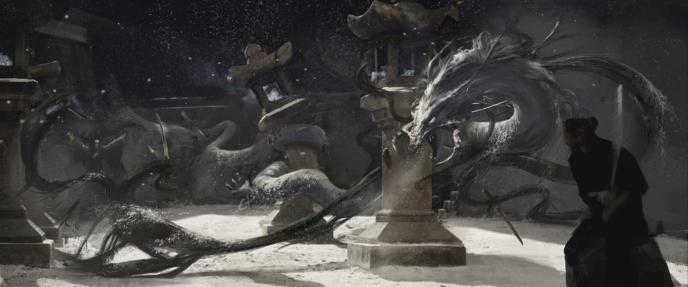
Shape-shifting
At one point the witch takes the form of a white fox – a creature that had to be vulpine but still recognisably the witch, not too mangy but not too clean either. The fur being all white actually made it more difficult to nail the look – the red and white markings of a regular fox give its face seem an almost completely different shape, but when it’s all white you have to make sure you have enough variation in the fur to make it realistic. “I used a lot of reference images of real foxes to get the feel of the correct shaping whilst sticking to a correct silhouette” says Rachel, the lead TD on the sequence. “I added clumps of fur in areas where markings might have been and added subtle markings into the textures so that it was still white but had darker markings where it might have been red on a real fox.”
CG leaves and grass were added for the forest shots for the fox to walk through, which helped place it in the shot. Maya was used with Framestore's in-house shaders for the look dev, Mari for the textures and the fur was created using our in-house fur system.
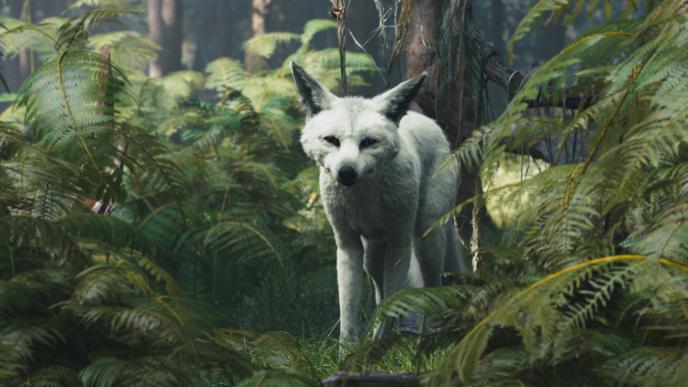
Building Ako fortress
47 Ronin’s environment work is some of the biggest undertaken at Framestore so far, ranging from set top ups and crowd work to fully rendered helicopter shots of the village of Ako and its lush paddy field surroundings. “We made sure that we meticulously researched the architecture and building materials that would have been typical of the Edo period” says Sirio. We also built the environment’s focal point –Ako castle.
While environments are often built using just 2D, Ako was a series of huge 3D generated environments, which made it a massive build and texture exercise. We also had to add digi double soldiers to help populated the scenes, as well as water, clouds – pretty much everything!

I think the work does have the unique ‘I haven’t seen that before’ look we wanted and all the VFX houses’ work sits together really nicely into one look.
